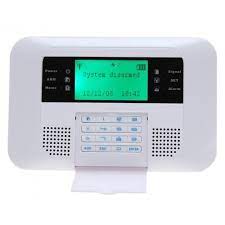In today’s fast-paced and dynamic work environment, keeping track of employee attendance is crucial for businesses of all sizes. An efficient attendance tracking system not only helps streamline payroll processes but also ensures compliance with labor laws and regulations.
Attendance tracking systems have come a long way from manual timesheets and punch cards. Modern systems leverage advanced technologies such as biometrics, RFID, and cloud computing to offer accurate and reliable attendance data in real-time.
One of the key benefits of an automated attendance tracking system is its ability to eliminate errors associated with manual data entry. By capturing attendance data electronically, businesses can reduce instances of buddy punching and time theft, ultimately leading to cost savings and improved productivity.
Moreover, attendance tracking systems provide valuable insights into employee behavior patterns, such as late arrivals or frequent absences. This data can help managers identify trends and take proactive measures to address attendance issues before they escalate.
From a compliance standpoint, an automated attendance tracking system simplifies the process of monitoring overtime hours, ensuring that employees are compensated fairly for their work. It also helps businesses stay compliant with labor laws by accurately recording working hours and breaks.
With the rise of remote work arrangements and flexible schedules, cloud-based attendance tracking systems have become increasingly popular among modern businesses. These systems allow employees to clock in and out from any location using their mobile devices, making it convenient for both on-site and remote workers.
In conclusion, investing in an advanced attendance tracking system is a wise decision for businesses looking to improve efficiency, accuracy, and compliance in their workforce management processes. By leveraging technology to automate attendance tracking, businesses can streamline operations, enhance transparency, and create a more productive work environment for their employees.
5 Essential Tips for Optimizing Your Attendance Tracking System
- Use a reliable attendance tracking software to accurately record employee attendance.
- Ensure that the system is user-friendly for both employees and administrators.
- Regularly train employees on how to use the attendance tracking system effectively.
- Set clear policies and guidelines regarding attendance tracking to avoid any confusion or disputes.
- Regularly review and analyze attendance data to identify trends and address any issues proactively.
Use a reliable attendance tracking software to accurately record employee attendance.
Utilizing a dependable attendance tracking software is essential for accurately recording employee attendance. By implementing a reliable system, businesses can ensure precise and real-time monitoring of employee work hours, breaks, and absences. This not only streamlines the payroll process but also helps in identifying patterns and trends in employee attendance behavior. With a robust attendance tracking software in place, businesses can enhance efficiency, reduce errors, and maintain compliance with labor regulations effortlessly.
Ensure that the system is user-friendly for both employees and administrators.
When implementing an attendance tracking system, it is essential to ensure that the system is user-friendly for both employees and administrators. A user-friendly system simplifies the process of clocking in and out for employees, reducing the likelihood of errors and ensuring accurate attendance records. For administrators, an intuitive interface makes it easier to manage employee schedules, track attendance data, and generate reports effortlessly. By prioritizing user-friendliness in the design of the system, businesses can enhance overall user satisfaction, streamline operations, and maximize the benefits of automated attendance tracking.
Regularly train employees on how to use the attendance tracking system effectively.
Regularly training employees on how to use the attendance tracking system effectively is essential for maximizing its benefits and ensuring smooth operations. By providing comprehensive training sessions, businesses can empower employees to navigate the system confidently, accurately record their attendance, and troubleshoot any issues that may arise. Training also helps in reinforcing the importance of accurate timekeeping and compliance with company policies, ultimately fostering a culture of accountability and efficiency within the organization.
Set clear policies and guidelines regarding attendance tracking to avoid any confusion or disputes.
Setting clear policies and guidelines regarding attendance tracking is essential to avoid any confusion or disputes in the workplace. By establishing transparent rules upfront, employees understand what is expected of them in terms of attendance and timekeeping. Clear policies help create a fair and consistent approach to tracking attendance, reducing the likelihood of misunderstandings or disagreements between employees and management. When everyone is on the same page regarding attendance expectations, it fosters a positive work culture built on trust, accountability, and mutual respect.
Regularly review and analyze attendance data to identify trends and address any issues proactively.
Regularly reviewing and analyzing attendance data is a crucial tip for maximizing the benefits of an attendance tracking system. By closely monitoring attendance patterns, businesses can identify trends such as recurring late arrivals or frequent absences among employees. This proactive approach allows managers to address any underlying issues promptly, whether it involves providing additional support to struggling employees or implementing corrective measures to improve overall attendance compliance. By leveraging attendance data insights, businesses can make informed decisions that contribute to a more efficient and productive work environment.


